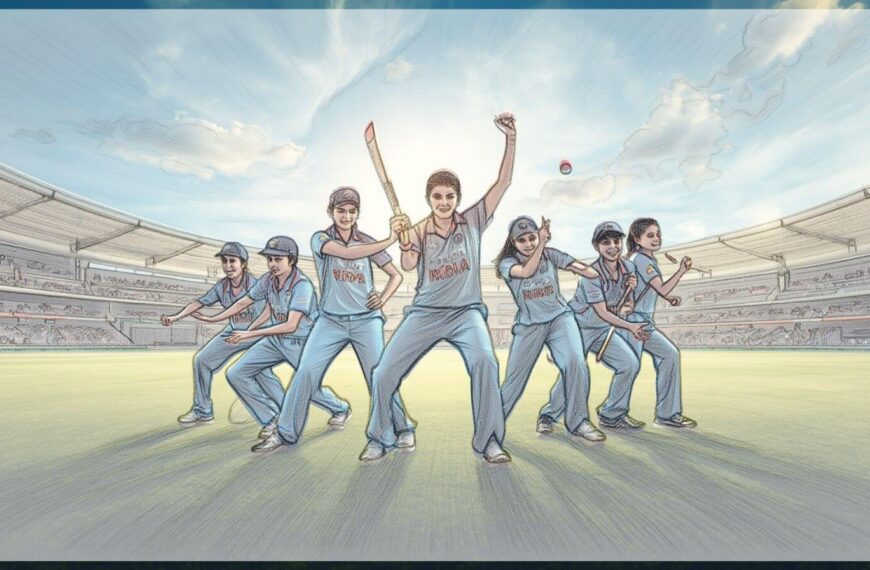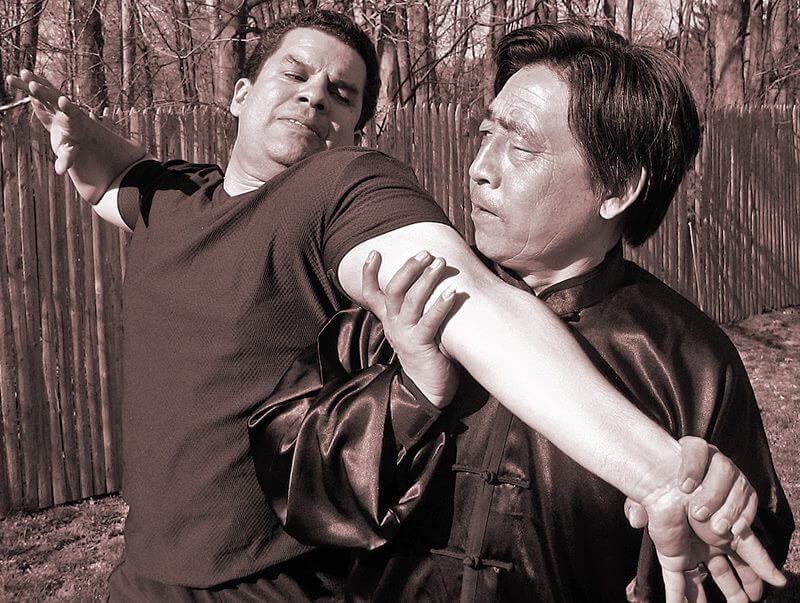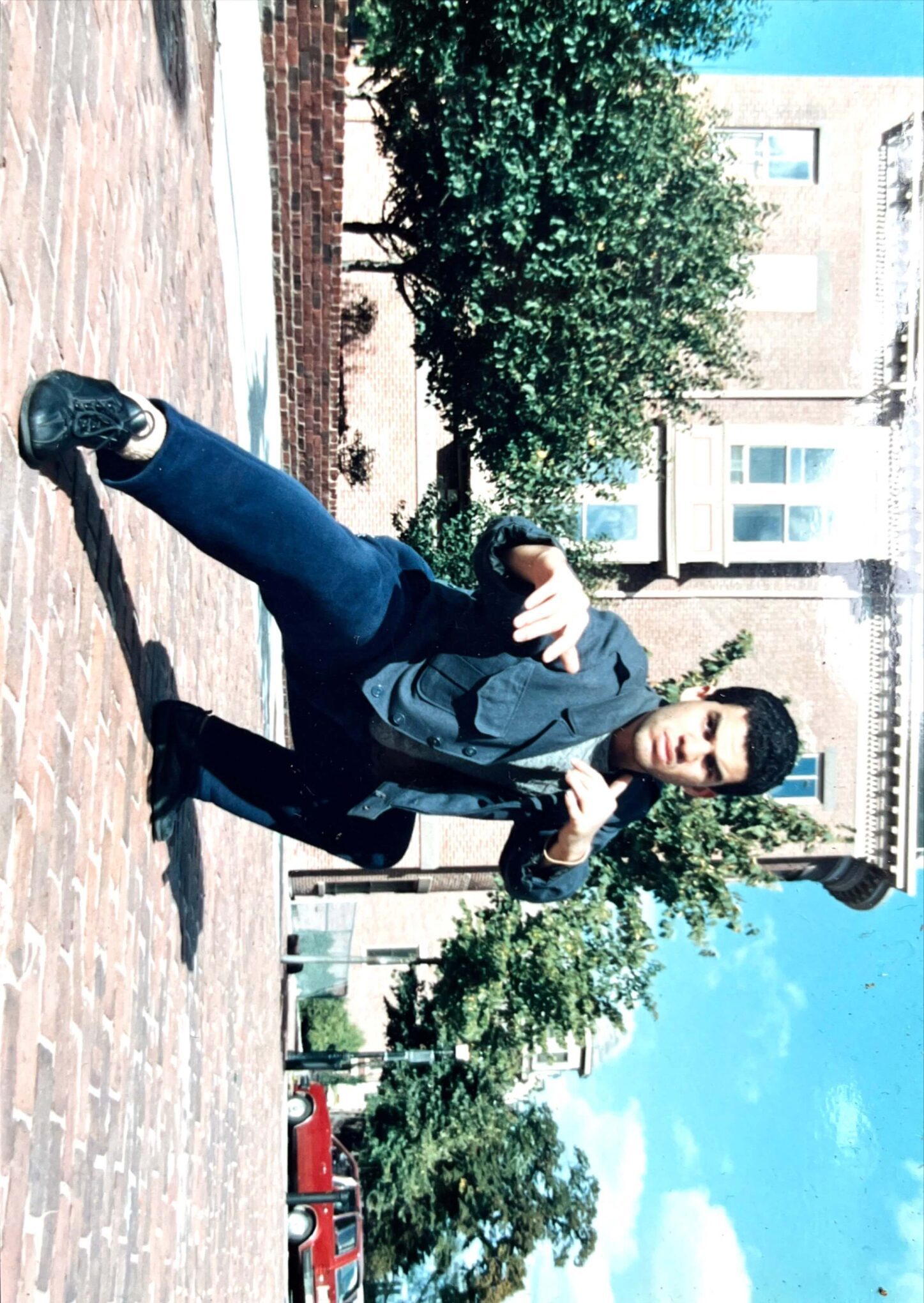Akashganga never had it so good. Enthused and awed by the sense of spectacle, for the first time in the history of the Air Force, a full load of 37 skydivers in spanking new and fancy dungarees jumped to join an assembled parade contingent on ground consisting of nine Squadrons of three flights each of about a thousand Vayuputras, in 1989. They then joined the ceremonial march past in the august presence of Mini Bawa, the Mukhya Deva Adhikari of the Central Command. Banjo was commended by the Chief of Air Staff for this unique planning and exhibition of military freefalling skills imbued with the spirit and festivity of sports skydiving. Sunil tells us more about the thrill and threats of Akashganga, in the weekly column, exclusively for Different Truths.
 Team Akashganga of the Dhartiputras, in the meanwhile, pressed on with their new found skill of Canopy Relative work (CRW). The sketchy ability of three to four jumpers to link up in the air while free-falling called Relative Work (RW) was overlooked temporarily. Accuracy was understood only as a landing ability on a cloth of 5 ft. diameter without hurting oneself. The very scientific and funny boned Sikku and the new whiz kid, with only sixty Freefall, jumps in his log, VP Sharma along with the Ustads, especially R Singh, Umed, Surat, Kadam and Ghosh went about this task with meticulous precision, careful planning and oodles of zeal. Contraptions and equipment were either modified or created like quick release and connecting hooks and strap to two jumpers in the air under parachutes, weight carrying reserves to
Team Akashganga of the Dhartiputras, in the meanwhile, pressed on with their new found skill of Canopy Relative work (CRW). The sketchy ability of three to four jumpers to link up in the air while free-falling called Relative Work (RW) was overlooked temporarily. Accuracy was understood only as a landing ability on a cloth of 5 ft. diameter without hurting oneself. The very scientific and funny boned Sikku and the new whiz kid, with only sixty Freefall, jumps in his log, VP Sharma along with the Ustads, especially R Singh, Umed, Surat, Kadam and Ghosh went about this task with meticulous precision, careful planning and oodles of zeal. Contraptions and equipment were either modified or created like quick release and connecting hooks and strap to two jumpers in the air under parachutes, weight carrying reserves to  increase light weighted jumpers, cords and bungees for flag flying. Twenty-two StratoCloud parachutes from a measly seven were brought on line and made jump worthy. Each parachute was named after the stars in the Milky Way or denizens of the skies and inscribed on the back flap cover in indelible ink such as Andromeda, Orion, Dhoomketu, Pegasus, Dhruva, Virgo, Sagittarius, Neptune, Cygnus, Kryptonite and Zodiac. These were then allotted to select members for personalised care, ownership and responsibility to substantially increase their jump life. Most canopies had already made over 500 jumps and nearing the end of their jump life or just lay unused since jump repairs were due. These languished due to required or pending authorisations, which were not coming soon, either. Simple modifications in parachutes was a Kafkaesque labyrinth. It was the sworn responsibility of the select few, therefore, to try, test and satisfy by jumping each parachute, especially the modified ones, before putting the relatively inexperienced on them. Each new or potential member had to conduct classes for another imagined ab-initio, checked and corrected before clearance was given. They had to unlearn their erstwhile habits and techniques; for that was the key, and indeed a very difficult beginning. All of it went through the proverbial eye of the needle: the signature of Banjo.
increase light weighted jumpers, cords and bungees for flag flying. Twenty-two StratoCloud parachutes from a measly seven were brought on line and made jump worthy. Each parachute was named after the stars in the Milky Way or denizens of the skies and inscribed on the back flap cover in indelible ink such as Andromeda, Orion, Dhoomketu, Pegasus, Dhruva, Virgo, Sagittarius, Neptune, Cygnus, Kryptonite and Zodiac. These were then allotted to select members for personalised care, ownership and responsibility to substantially increase their jump life. Most canopies had already made over 500 jumps and nearing the end of their jump life or just lay unused since jump repairs were due. These languished due to required or pending authorisations, which were not coming soon, either. Simple modifications in parachutes was a Kafkaesque labyrinth. It was the sworn responsibility of the select few, therefore, to try, test and satisfy by jumping each parachute, especially the modified ones, before putting the relatively inexperienced on them. Each new or potential member had to conduct classes for another imagined ab-initio, checked and corrected before clearance was given. They had to unlearn their erstwhile habits and techniques; for that was the key, and indeed a very difficult beginning. All of it went through the proverbial eye of the needle: the signature of Banjo.
 Flying close; canopies almost touching each other, wake turbulence in the extended glide angle of parachutes, inflation and collapse, full, half and no brake turns, flare landings and splits, the fear of wrapped canopies and how to get out of them, cut away drills and opening of reserve while entangled, selecting alternate escape landing areas in case of incorrect winds or spot, punching higher than the designated altitude by constant alertness and self-estimation of vector positions during free fall were some of the tricks drilled into the team by the senior supervisory team. HAPPS were the first system used before conversions on to StratoClouds. Coming down safely and smartly under reserve canopies especially the small white Strato Safety Star canopy of five cells became no longer frightful. Safety walked hand in hand with innovation. VP, Surat handled the light weights Ghosh, Kadam, Kolte, Dubey, while Sikku and R Singh took charge of the heavy Umed, Anthony, Ravi Kumar, Garade, Sarathe and Hans. The former legends Sandhu, Quttubuddin and Banerjee were consciously put aside causing a lot of heartburn. Oftentimes, the static line round canopy Ustads simmered at the new rising of relatively junior colleagues. In spite and envy, therefore, the petty and aged, unfairly burdened them with extra workloads sometimes. To join Akashganga was no cakewalk. It meant added work, increased responsibility and risk for flag and country, away from families and common comforts of home and hearth. To cap it all, was the constant haranguing and abuse of the never satisfied, Banjo in public or private. All of this and much more led to the finest formations of canopies in midair! Each day since 1989 Biplanes, Mega stack and 10 man mega planes, Handplanes, four man Diamonds, Leg planes, et al dotted the Malpura skies. By 1990, as many as 25 had become something of an expert in CRW and half the Dhartiputras, accomplished military free fallers. Night free fall had been initiated as a regular course for Army troops with minimum use of illuminated sticks and goosenecks on the ground indicating landing direction. Jumping above 15,000ft was until then restricted as Oxygen support equipment was still not made available. These successes happened, all under Lal’s watch attributable to his sagacity in not being an overbearing leader but to have patiently and under great provocation to have ridden the storm.
Flying close; canopies almost touching each other, wake turbulence in the extended glide angle of parachutes, inflation and collapse, full, half and no brake turns, flare landings and splits, the fear of wrapped canopies and how to get out of them, cut away drills and opening of reserve while entangled, selecting alternate escape landing areas in case of incorrect winds or spot, punching higher than the designated altitude by constant alertness and self-estimation of vector positions during free fall were some of the tricks drilled into the team by the senior supervisory team. HAPPS were the first system used before conversions on to StratoClouds. Coming down safely and smartly under reserve canopies especially the small white Strato Safety Star canopy of five cells became no longer frightful. Safety walked hand in hand with innovation. VP, Surat handled the light weights Ghosh, Kadam, Kolte, Dubey, while Sikku and R Singh took charge of the heavy Umed, Anthony, Ravi Kumar, Garade, Sarathe and Hans. The former legends Sandhu, Quttubuddin and Banerjee were consciously put aside causing a lot of heartburn. Oftentimes, the static line round canopy Ustads simmered at the new rising of relatively junior colleagues. In spite and envy, therefore, the petty and aged, unfairly burdened them with extra workloads sometimes. To join Akashganga was no cakewalk. It meant added work, increased responsibility and risk for flag and country, away from families and common comforts of home and hearth. To cap it all, was the constant haranguing and abuse of the never satisfied, Banjo in public or private. All of this and much more led to the finest formations of canopies in midair! Each day since 1989 Biplanes, Mega stack and 10 man mega planes, Handplanes, four man Diamonds, Leg planes, et al dotted the Malpura skies. By 1990, as many as 25 had become something of an expert in CRW and half the Dhartiputras, accomplished military free fallers. Night free fall had been initiated as a regular course for Army troops with minimum use of illuminated sticks and goosenecks on the ground indicating landing direction. Jumping above 15,000ft was until then restricted as Oxygen support equipment was still not made available. These successes happened, all under Lal’s watch attributable to his sagacity in not being an overbearing leader but to have patiently and under great provocation to have ridden the storm.
Akashganga never had it so good. Enthused and awed by the sense of spectacle, for the first time in the  history of the Air Force, a full load of 37 skydivers in spanking new and fancy dungarees jumped to join an assembled parade contingent on ground consisting of nine Squadrons of three flights each of about a thousand Vayuputras, in 1989. They then joined the ceremonial march past in the august presence of Mini Bawa, the Mukhya Deva Adhikari of the Central Command. Banjo was commended by the Chief of Air Staff for this unique planning and exhibition of military freefalling skills imbued with the spirit and festivity of sports skydiving.
history of the Air Force, a full load of 37 skydivers in spanking new and fancy dungarees jumped to join an assembled parade contingent on ground consisting of nine Squadrons of three flights each of about a thousand Vayuputras, in 1989. They then joined the ceremonial march past in the august presence of Mini Bawa, the Mukhya Deva Adhikari of the Central Command. Banjo was commended by the Chief of Air Staff for this unique planning and exhibition of military freefalling skills imbued with the spirit and festivity of sports skydiving.
The Adventure Foundation had become a full-fledged Directorate at Air Headquarters. AeroSports, an adjunct was fast getting its house in order. Thapar, an erstwhile Dhartiputra, had always felt wronged for having been not given a usual long run at PTS. He had more to give and was brimming with ideas. All he needed was a platform. He managed to train a crop of non-professionals in parachuting and extend its benefits to some privileged civilians. The umbrella of broad-basing sports parachuting was the new mantra. It was to his credit that the robust and time-tested training methodology, time frames and training curriculum, field packing procedures learnt from PTS, was tweaked and twisted to bring in a shortened time frame a la the holiday and week-ending jump enthusiasts in parts of the West. A copycat model had been devised. There were no jump costs. The Air Force provided it for free. What was lacking in infrastructure and training was provided from Paratroopers Training School (PTS).The Para Brigade, Establishment 22 at Sarsawa and Charbatia, and the ADR&DE were lured with many enticements of exclusive jumps on the side, to part with their parachuting gear including parachutes. Travel junkets, ostensibly to promote the sport, better training and international exposure was made with sops for serving and erstwhile senior Dhartiputras. Thapar used his inside knowledge of PTS to pick some of the best Dhartiputras like R Singh, Anthony, Ghosh,  Hans, Ravi Kumar and riggers like Divedi, IPSingh to train his fresh flock to become the core group in time: Sinha, Rajan, Rana, Jaishanker and Reddy among others. The priceless StratoCloud canopies that had been restored and repaired with great toil and ingenuity at PTS were forcibly and under great pressure loaned out to the Directorate of Adventure. These were returned later with fudged endorsements of the number of jumps used and abused. Sadly, these paras had little or no life left anymore. Waiting in the wings, impatient and anxious, was another crop of Dhartiputras, like Sheru and Anup, and other rookies, all fully competent in the shortest time, nurtured in the best training environment possible, denied of flying the StratoCloud, as often, to perfect competencies. As if the tussle with the Army Paras was not enough, the Adventure Team called the Air Devils started sharing limited vacancies in prestigious demonstrations and skydiving displays. This new Skydiving Team came to compete and threaten the undisputed presence of Akashganga on the Indian firmament. There was a price to be paid, however. The safety records were compromised for speed and recklessness. Many parachute failures and serious injuries were avoidable. Thapar hitched the Directorate with the Aero Sports Club of India and through its auspices improved upon its bonafides with accredited International Skydiving bodies like United States Parachuting Association (USPA) or Federal Aeronautique Internationale (FAI). It was official and the maverick Thapar with enviable farsightedness gave an international dimension to sports parachuting in India and became its formal ambassador. PTS bled while the new Directorate with some great vision, manipulated power and uncanny transactional skills soared. What little skydiving was being done sporadically by the Indian Army or inexperienced entrepreneurs did not quite take off, falling victim to prohibitive capital costs of aeroplanes and parachutes. The Air Force in that sense continued to retain its stranglehold.
Hans, Ravi Kumar and riggers like Divedi, IPSingh to train his fresh flock to become the core group in time: Sinha, Rajan, Rana, Jaishanker and Reddy among others. The priceless StratoCloud canopies that had been restored and repaired with great toil and ingenuity at PTS were forcibly and under great pressure loaned out to the Directorate of Adventure. These were returned later with fudged endorsements of the number of jumps used and abused. Sadly, these paras had little or no life left anymore. Waiting in the wings, impatient and anxious, was another crop of Dhartiputras, like Sheru and Anup, and other rookies, all fully competent in the shortest time, nurtured in the best training environment possible, denied of flying the StratoCloud, as often, to perfect competencies. As if the tussle with the Army Paras was not enough, the Adventure Team called the Air Devils started sharing limited vacancies in prestigious demonstrations and skydiving displays. This new Skydiving Team came to compete and threaten the undisputed presence of Akashganga on the Indian firmament. There was a price to be paid, however. The safety records were compromised for speed and recklessness. Many parachute failures and serious injuries were avoidable. Thapar hitched the Directorate with the Aero Sports Club of India and through its auspices improved upon its bonafides with accredited International Skydiving bodies like United States Parachuting Association (USPA) or Federal Aeronautique Internationale (FAI). It was official and the maverick Thapar with enviable farsightedness gave an international dimension to sports parachuting in India and became its formal ambassador. PTS bled while the new Directorate with some great vision, manipulated power and uncanny transactional skills soared. What little skydiving was being done sporadically by the Indian Army or inexperienced entrepreneurs did not quite take off, falling victim to prohibitive capital costs of aeroplanes and parachutes. The Air Force in that sense continued to retain its stranglehold.
Krishna, the Dark-god, wily and politically wired had begun to attend the many interesting story telling sessions. True to his style and inclinations, he recalled instances of the many Devas who had fallen prey to the temptations of fame and glory and had turned rogue. Only the Blind King was left wondering, as to who after all were the Asuras?
©Sunil Kumar Banerjee
Photos sourced by the author.



 By
By
 By
By
